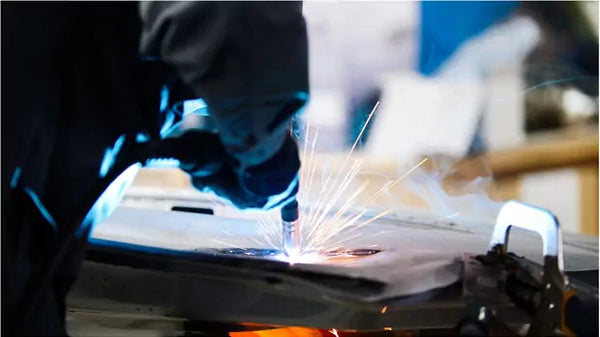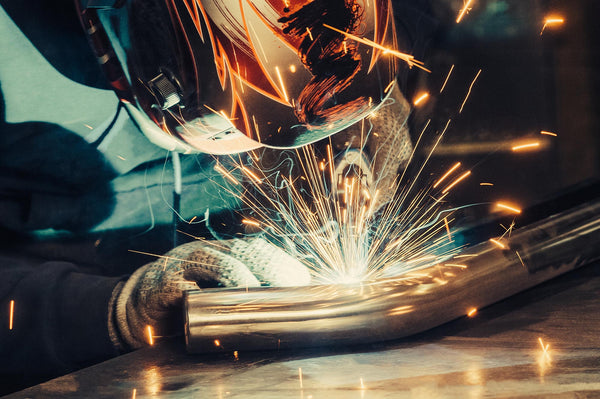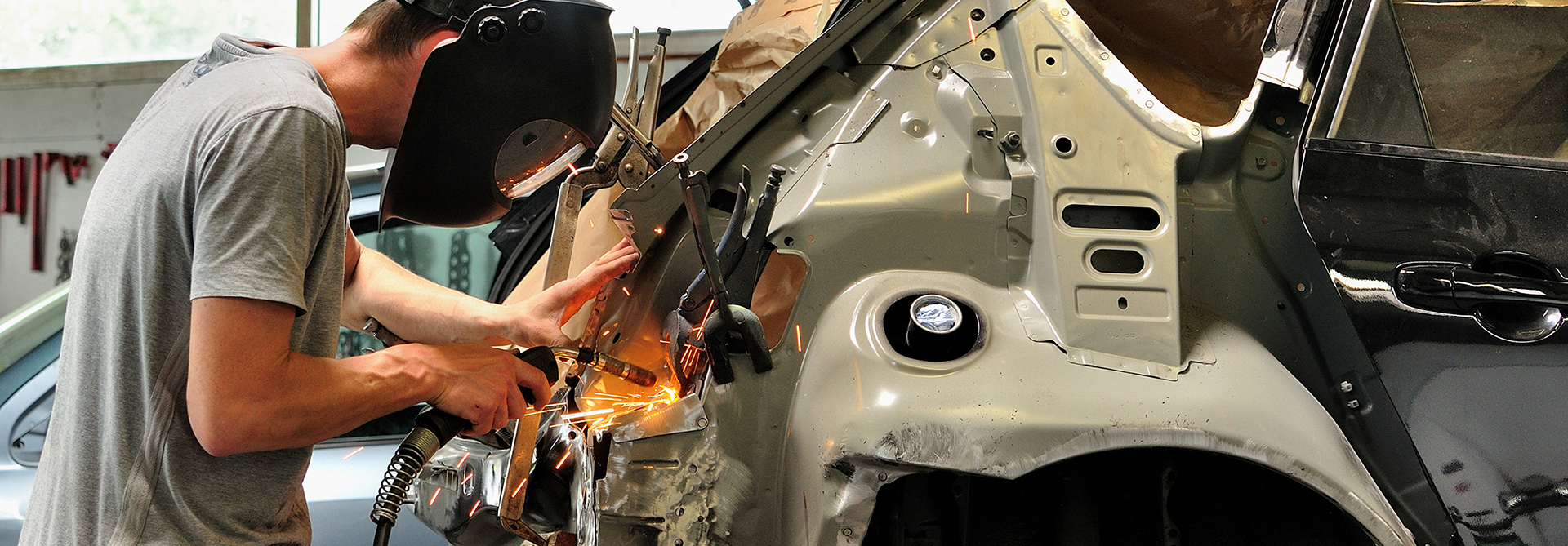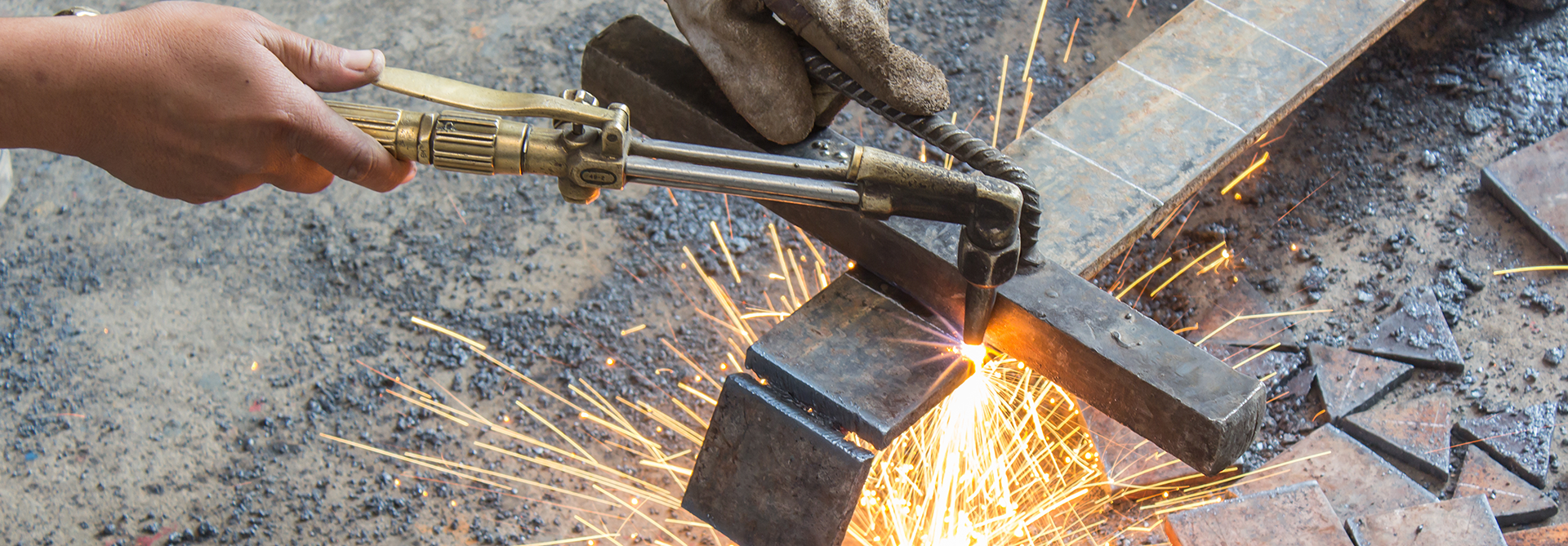It would blow your mind to realize how many welders with decades of experience still face the same problems they did when they first started. Common automobile welding issues are exactly that: “common.” Like a bad relationship, they just keep showing up when you thought you were done. And they’ll continue to appear, until you learn how to minimize the problems or fix them as soon as they arrive.

Warpage
Imagine you’ve got a bunch of people sitting down in the shape of a rectangle. You tell them that you’re going to turn on some music and they should dance around. When you turn off the music, they must sit down wherever they’re at. You turn on the music and the people begin dancing around. Some start running into each other while others move farther away. You turn off the music and they all sit down. Chances are, they’re no longer sitting down in the rectangle shape they started in.
This is essentially how warpage works. You use heat to excite the molecules inside the metal so they expand. But as they cool, they’re not going to shrink back into the shape they started. With some industries, the metal they use is so thick that there’s generally not enough heat to cause significant issues. But because automobiles tend to use much thinner material, even small amounts of heat can cause significant issues.
The first step is to minimize the amount of heat you’re using on your material. If you’re MIG welding a patch onto a panel, you can’t just lay down a continuous bead. The heat would cause your piece to look curvier than a Kardashian. Instead, you should do a single, quick weld much like you’d do a tack. Once the piece has cooled down, come back and do another quick tack overlapping the edge of your previous one.
Some welders use a wet rag to cool down their piece faster. A lot of experts recommend against this simply because you’re adding moisture that won’t dry before you start welding again. If you accidentally trap that moisture, it can cause issues down the line.
Going back to our dancing people analogy, what if you put a fence around them so no matter how they moved around, they’d be forced to stay in a rectangle shape? This is essentially how clamps work. By clamping the area around where you’re welding, you’re helping to hold that material in place. Obviously there’s only so much good a clamp can do (E.g. if you liquefy your material, a clamp isn’t going to be able to “hold” it in shape). But when welders overlook clamps, they’re ignoring one of the better ways to minimize warpage.

Over Penetration
Similar to warpage, over penetration is a big issue with automobile welding because of the thinness of your material. It’s really easy to punch right through a panel. Last year, Jeep had to issue a recall because the new wrangler models had a serious issue with over penetration on their frames. It’s a simple but potentially expensive mistake.
First of all, a lot of issues that cause over penetration take place before you ever strike an arc. For MIG, a lot of the problem comes down to your wire feed and travel speeds. If you find yourself punching too far through your material, your wire feed speed is probably too high and/or your travel speed is too slow.
If you own a welding machine you can trust, the best place to start is your recommended settings. Most machines now either have an auto-set feature or they include a reference chart right on the case. Before you begin welding, try a bead on a piece of practice material that’s similar to your base metal.
Often, it’s difficult to see over penetration unless you’re completely going through the material. Pay attention to other indicators such as bead profile and discoloration. While not always accurate, penetration is often tied to amperage, which will affect both of these aspects.
Finally, another often overlooked aspect is that TIG welding can use less amperage to create the same weld compared to MIG. Amperage equals heats which equals warpage. So the less amperage, the less distortion. And when you’re dealing with thin material that’s common in automobile welding, warpage is an issue. For instance, you can MIG weld body panels. But technically you could TIG the same welds with less heat and therefore have to worry about less distortion.

Poor Starts
A lot has been said about managing your weld pool. But actually establishing it in the first place can be a big issue. If you’re having a problem with your starts, experts will often recommend that you begin further back from where you actually want to weld so you have a bit of “mess up” room to get going. The idea is that you can then easily come back and grind away where you started. But in automobile welding, we often don’t have that type of luxury. Starting away from the area you want to weld will cause unnecessary heat build-up which then leads to warpage.
First, you’ll want to make sure you’ve got all the proper settings. Wire speed/amperage and voltage will all affect your start. However, you can have all the correct settings, but if your machine isn’t reliable, it doesn’t matter. Unfortunately, this gets to the root of a lot of start issues. Just because you’ve set your machine to a particular parameter, doesn’t mean it’ll actually be able to achieve that measurement consistently. If this is the case for you, it might be time to look at a new welder.
Fortunately, many new machines have features that make achieving a good start about as simple as squeezing the trigger. For instance, the Millermatic 211 features smooth-start technology which noticeably helps with cleaner, higher quality starts.
Focusing on preventing and fixing the most common automobile welding issues you’ll face is a great way to improve your overall quality. If you’re looking for a new welding machine that you can rely on, check out the recommended products below.







